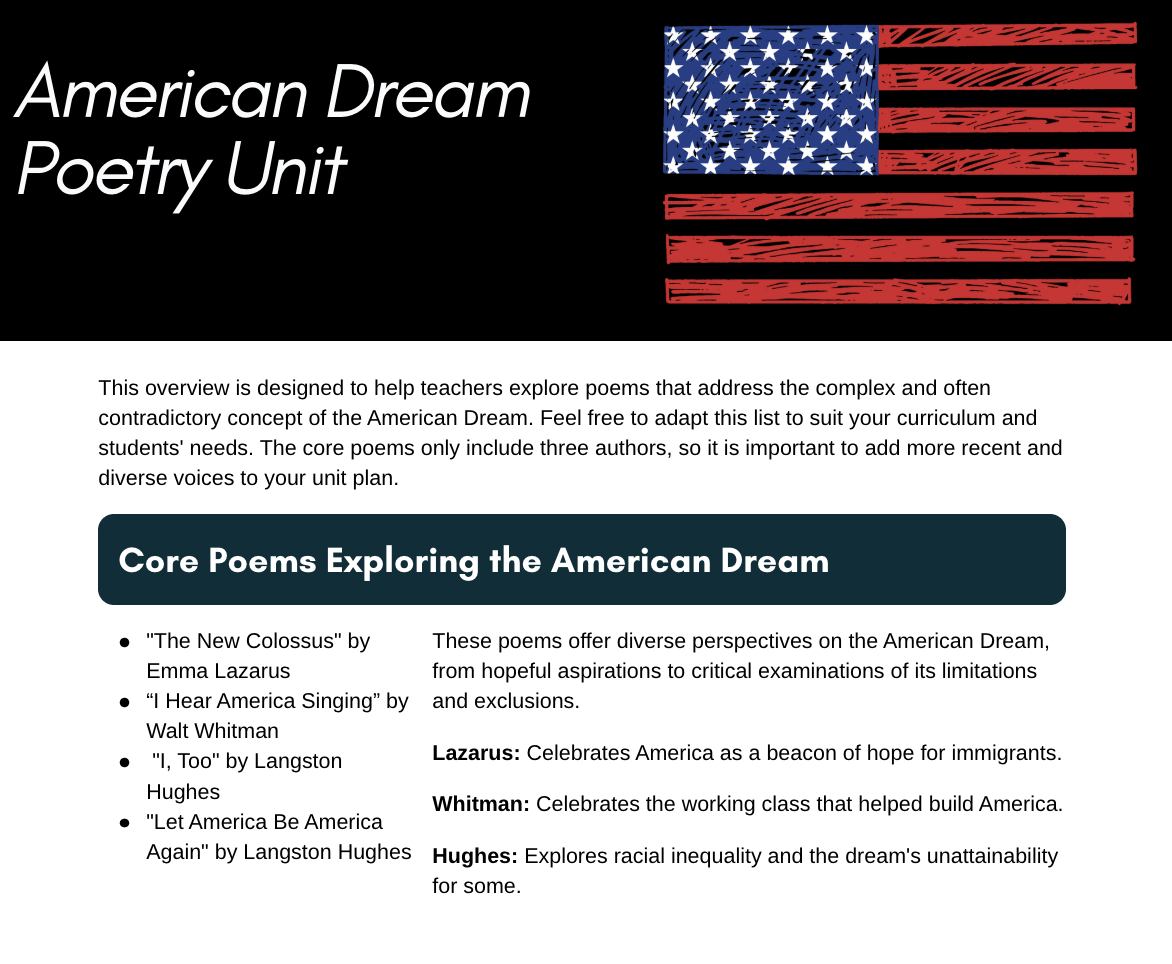Teaching the American Dream Through Song
I’ve been teaching American literature for 17 years now, and my favorite unit, by far, is when we discuss the idea of the American dream in poetry. Teaching poetry to explore the American Dream is both fun and meaningful because poetry gives students a fresh, creative way to tackle a huge concept. Starting the school year with poetry allows me to get the students to dive right in. These short, powerful pieces packed with emotion and meaning. Before we read The Great Gatsby, we read Walt Whitman, Emma Lazarus, and Langston Hughes.
And while I love poetry, I also love music. I used to use music to supplement my teaching of poetry, but over the years, I realized that I could increase engagement by allowing music to be a major focus in our classroom for the first month.
Now, poetry and music are taught side-by-side. The first literary analysis essay of the school year is on a poem or song of a student’s choosing. Now my students can take their streaming and turn it into something thoughtful and academic. If you want to see engagement increase in your classroom, and have students who are excited to write an essay, keep reading.
This document outlines the core poems that I teach throughout our short introductory unit.
Download the full list of suggestions here.
Poems and songs often express hopes, struggles, and questions about success, freedom, and identity—all major parts of the American Dream. Because poetry invites multiple interpretations, students are encouraged to think critically, discuss their ideas, and connect personally with the text. It sparks great conversations and lets them see how writers from different backgrounds and time periods have wrestled with what it really means to "make it" in America.
Now, for the songs!
I like to include older, classic songs that represent American ideals and a collection of newer songs. (Newer for me means anything after 1960!) It’s important to discuss some of the issues with these, songs, too. Many offer an idyllic portrayal of the foundation of the U.S. and erase narratives. Make space in your classroom to discuss the ideals and flaws in our narratives. Please note that some of these songs might not be suited for your classroom, and you will want clean versions of the more recent ones. If you are not comfortable with the ones listed below in your classroom, then there are others you can choose!
“My Country ‘tis of thee” Samuel Francis Smith (1831)
“America the Beautiful” Katherine Lee Bates (1895)
"This Land Is Your Land" by Woody Guthrie (1944)
“America” by Neil Diamond (1980)
"Born in the U.S.A." by Bruce Springsteen (1984)
“God Bless the U.S.A.” by Lee Greenwood (1984)
“Changes” by Tupac (1992/ 1998)
"Empire State of Mind" Jay-Z featuring Alicia Keys (2009)
“Land of the Free” by The Killers (2019)
For more suggestions, and for real world examples of analytical writing, check out NPR’s American Anthem which analyzes 50 songs from different time periods and genres.
For modern songs, I like to use '“Born in the USA” by Bruce Springsteen and “Land of the Free” by The Killers because the titles appear to be simple, but the lyrics offer complex narratives for listeners to question the actions of our government throughout history. I think it’s important that kids can understand that you can still love your country, and be patriotic, even if you acknowledge the wrongdoings that have occurred over time.
This year (2025) I’ll be posting regularly and adding free and paid products to my Teachers Pay Teachers store. Follow along!


